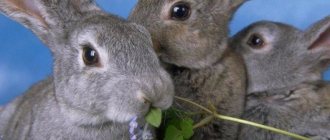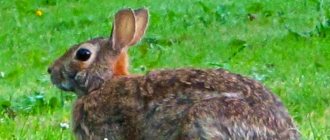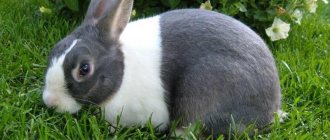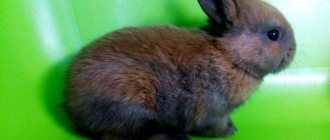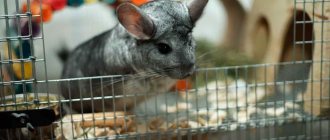Is it possible to wash rabbits
Most experts agree that bathing rabbits should be avoided whenever possible. Many veterinarians insist on the inadmissibility of water procedures for ornamental rodents and cite the cleanliness of the animals and the inevitability of stress during bathing as arguments.
Rabbits really don't like water and diligently avoid it in the wild. But in critical situations, animals show themselves as good swimmers. Before bathing decorative rabbits, you need to understand that this is serious stress for them. In addition, water procedures are harmful to the health of the skin and fur of these rodents.
Water removes the lipid coating from the surface of the epidermis of rodents. This causes dryness and flaking of the skin. Bathing a rabbit can lead to shedding of fur, and the animal itself becomes nervous, even aggressive. There are also opposite reactions, when a pet falls into an unusual apathy.
Important! The fur of rodents of exhibition breeds is more susceptible to damage from water than that of non-pedigreed individuals.
Of course, there are times when cleaning your pet with water is necessary.
The basic principles of this extremely rare procedure:
- Compliance with the sequence of actions.
- Conducting preliminary preparation.
- Using special cleaning products.
- Tenderness, caution.
- Unobtrusiveness.
Experts believe that it is possible to train decorative rodents not to be afraid of water procedures. It is suggested to start washing animals from an early age. Bathing an unprepared rabbit can become so stressful that the animal may die from fear.
Frequently asked questions about bathing a decorative rabbit at home
Beginner rabbit breeders don’t know whether they need to wash their pet and, if necessary, how to do it? It should be noted that many owners are trying to find a definite answer, but this is fundamentally wrong. Some measures for caring for the animal may not be carried out, but some, such as washing when heavily soiled, are necessary.
Let's look at three common questions about the procedure for caring for an ornamental pet.
Why can't you bathe rabbits?
Rabbits are usually very clean and take care of themselves.
Most veterinarians have a negative attitude towards bathing ornamental animals. Although there is nothing terrible in the process itself, it is still worth noting that the washing procedure is undesirable. In some situations, bathing has negative consequences:
- Immersion in water is very stressful for a rabbit.
- Water getting into the ears, eyes or nose causes incurable diseases.
- Hypothermia and drafts while swimming can cause dangerous inflammation.
The listed diseases cause irreparable harm to the fragile health of the rabbit.
For prevention, it is necessary to clean your pet's eyes occasionally.
How to wash rabbits eyes?
As a preventive measure for eye diseases or when necessary, owners need to clean their pet's eyes. A special lotion is applied in a small amount to a cotton pad and removes impurities, moving from the outer corner of the eye to the inner. If necessary, the cleaned eye is treated again in the same order.
Cleansing lotion is sold at pet stores and is used as a hygienic treatment for the animal's eyes. Usually its use does not cause side effects, but if an allergy occurs, stop using the product.
Is it possible to blow dry a rabbit?
You can use a hair dryer to speed up the drying of the wool. However, it is better to do without it. This instrument makes a loud sound, which greatly frightens the already fearful rabbit. The owner must be attentive and determine by the pet’s well-being whether it is possible to use a hair dryer or not. Excessive manipulation can increase stress.
If you nevertheless decide to dry the animal’s fur with a hairdryer, then you need to turn it on at minimum speed and dry it at a distance of at least 50 cm. It is strictly forbidden to use the average and maximum power of the hairdryer.
Proper drying of a rabbit after bathing eliminates possible risks to its health.
When is bathing necessary?
Washing a rabbit is not easy. If the owner is not sure that he can handle it on his own, it is better to invite a groomer. In any case, bathing animals at home requires the presence of an assistant for backup in order to protect frightened pets from possible injuries.
The main reasons that encourage owners of decorative rabbits to bathe their charges:
- the presence of dirt on the fur after a walk;
- the appearance of fleas;
- severe overheating of the animal;
- the appearance of an unpleasant odor;
- indigestion in a pet;
- contact of harmful chemicals on the animal’s fur coat.
Important! You cannot bathe decorative rabbits more than once every 6–7 months.
When is bathing really necessary?
Bathing a rabbit is justified only in certain cases:
- Heavy contamination of the animal after walking outside.
- Diarrhea.
- Getting harmful substances into the fur.
- The spread of urine or feces odor due to improper care of the rabbitry.
- In case of overheating (heat stroke).
- Contaminated fur that cannot be cleaned with a damp cloth.
Detergents
The skin of long-eared pets is unusually sensitive to the effects of any unnatural products. The slightest irritation of the epidermis in rabbits may well develop into dermatological diseases. And this will lead to fur loss.
Special shampoo for rabbits can be purchased at a pet store. The pH level of this product is designed for the sensitive skin of animals. If products for washing eared pets are not commercially available, they can be replaced with a composition for bathing kittens.
Some shampoos for rodents (such as Stepashka) include a small amount of petroleum jelly. It creates a protective coating on rabbits' fur and gently moisturizes the skin. After using this product, the fur of the animals is easy to comb.
Shustrik pet shampoo contains natural extracts of beneficial herbs (nettle, burdock, rosemary), as well as glycerin, which softens the skin. This product not only washes away dirt, but also relieves minor inflammations, cleanses harmful bacteria, and strengthens the epidermis.
Human wash products should not be used when bathing rodents. The pH levels in humans and rabbits are so different that for pets, using, for example, toilet soap can lead to serious skin burns.
Important! If your pet has even a small wound, you cannot bathe it. It is better to postpone the procedure until the animal’s skin has recovered.
Products that can be used for washing
First of all, it is necessary to prepare the room in which swimming will take place. Most often this is the bathroom, but you can bathe in other rooms, the main thing is that it is warm there and there are no drafts, for which you need to close all the windows. You can wash your pet in a sink, bathtub or large basin. You should also take rabbit shampoo and a large towel. If you don't have shampoo, good baby soap can replace it. Regular and especially laundry soap cannot be used. The bathing product must be natural, without any admixture of aggressive substances, fragrances, dyes and other harmful chemicals.
How to bathe decorative rabbits
Like many rodents, rabbits cannot tolerate drafts. It is better to arrange a place for swimming away from open doors and windows. Preliminary preparation for bathing is of great importance for the health of pets.
It is carried out in stages:
- Do wet cleaning of the room.
- Heat the water to room temperature and pour it into a basin.
- Examine the rabbit's skin for damage.
- Assess the length of your pet's claws. If it exceeds the norm, the claws are trimmed to avoid problems when bathing the animal.
In the basin
The container should not be too small. Water is poured into the basin to a level of 3–4 cm, and a little shampoo is added. It is necessary to pay attention to the water temperature - it should not exceed 37°C.
For bathing you will need a jug of clean water for rinsing and 2 warm towels. One will need to dry the animal after bathing, the other will need to wrap it up to keep warm.
Sequence of bathing rabbits:
- the assistant takes the animal in his arms, lowers the hind limbs into the pelvis;
- the owner soaps the contaminated area of the skin with a warm solution from the basin, while it is important to keep the ears, eyes and nose dry;
- the area to be washed is rinsed with warm water from a jug;
- The rabbit is dried and wrapped warmly.
Under the tap
This method is also called mini-bathing. You don't need a bowl of water for it. It is enough to adjust the temperature of the water in the tap to 35–38 degrees, add a little into the sink (up to a level of 3–4 cm). There should be a towel at the bottom of the sink.
Washing is carried out locally - first wetting and then soaping the contaminated area. If the animal behaves calmly, you can distribute the foam over the rabbit's entire body. After a few minutes, the pet is rinsed under running water, dried and wrapped.
Important! Before bathing eared beauties, especially if they have long hair, you need to remove all tangles from their fur coat. If the knots cannot be combed out, you should cut them out with scissors.
Dry method
To clean rabbit fur today, not only ordinary shampoos are used, but also waterless products. They are purchased at pet stores or veterinary pharmacies.
Waterless shampoo or spray is applied to the rabbit's fur, rubbed in with the palm of your hand, then combed out. The product should be sprayed with caution so as not to damage the eyesight of rodents.
Sprays that contain mink oil are especially popular today. They perfectly retain moisture, smooth out fur, and protect the epidermis from dryness. Some anhydrous rodent care products contain antiparasitic substances that help rid pets of fleas and other skin parasites.
For waterless care of rabbits, you can also use the so-called cleaning powder (dry shampoo). This composition not only cleans fur well, but also deodorizes wool, gives it shine and a pleasant smell. The powder is applied to the dirty area, lightly rubbed in, and then the animal is combed out.
Interesting! Waterless pet care products are best used for minor stains.
Is it possible to blow dry a rabbit?
To protect your animal from diseases and dry it faster after bathing, you can use a hairdryer. It is turned on to the minimum setting, the distance between the hair dryer and the pet should not exceed 50 cm.
Important! During drying, you can use special brushes to comb the fur.
Owners of decorative breeds should, whenever possible, do without using a hair dryer. This tool makes a lot of noise, which can only increase the animal’s stress from being in the water.
In addition, rabbit skin is very sensitive to high temperatures, so when you turn on the hair dryer at maximum power, your pet can get burned.
Note! After washing your rabbit for several hours, it is important to avoid drafts. After visiting the bath, the animal is several times more likely to catch a cold. You should not swim in winter.
How to dry your pet properly
Drying a bathed rabbit should be done correctly. First, the animal is dried with a soft towel, wrapped in a second one and left to sit alone for a few minutes.
Next, you can use a warm air stream from a hair dryer to dry. The device must be placed no closer than 5–6 cm from the animal and turned on at minimum power. As the animal dries, you can slowly comb it. A bristle comb is ideal for a short-haired pet; a slicker brush or a comb with sparse teeth is ideal for a long-haired pet.
Important! A hairdryer can only be used if the animal reacts calmly to the sound of the device operating.
If the rabbit begins to worry when the hair dryer is on, it is better to stop using the device. The animal can lick itself perfectly well on its own. But you can’t put it down on the floor; a wet pet can get hypothermic.
Afterwards, be sure to treat the rabbit’s ears with a special lotion. This is very easy to do: apply a little product to the sponge, distribute evenly and clean the ears. You can also clean your rabbit's eyes in the same way.
General washing recommendations
Any decorative rabbit must be washed according to the basic instructions, which will help you do everything correctly and safely:
- Identify areas of contamination and wash only those areas. This is done exclusively with warm water with the addition of a special shampoo for rabbit fur.
- You should not use a shower - a small basin with warm water is enough to prevent droplets from getting into your ears.
- Ask someone close to you to help you, as it can be simply impossible to keep an active rabbit alone.
- At the end of the procedure, quickly dry the baby. This can be done with a hairdryer, but only with a warm stream of air, not hot.
However, you should not bring your pet to bathe. After all, diarrhea occurs due to improper nutrition, and in this case the pet can get dirty solely because of your carelessness.
If the baby has yellow paws, you need to analyze how many times the cage is removed. Be prepared to offend your pet, as decorative rabbits do not like to come into contact with water under any circumstances.
Finishing the wash
After bathing, it is very important to dry your pet thoroughly. It is best to use several towels for these purposes. Carefully, so as not to damage the fur, wrap the rabbit in a cloth and blot the moisture. Change to dry. Be careful that your little one doesn't catch a cold. Therefore, it is better to keep it in a dry and warm towel until it dries completely, do not put it on the floor and do not let it dry while running.
Rabbits that are washed frequently become accustomed to giving themselves a bath.
If your furry pet is not very timid and is not bothered by sharp sounds, you can use a hairdryer to dry it. In this case, the temperature should be set to the minimum so as not to burn the skin, keep the hairdryer at a considerable distance and not direct the air stream into the animal’s face.
After completing hygiene procedures, caress your baby again. Some rabbits can be very touchy and take a long time to show their owner their displeasure from the stress they have endured.
However, individuals that are washed frequently get used to it and allow themselves to be bathed, albeit warily, but without resisting.
Expert advice
Veterinarians are divided today about the possibility of washing rabbits.
While some categorically advise against using this method of cleansing, others allow a similar possibility, but subject to certain rules:
- the room should be warm enough, not lower than +22...+25 °C, without drafts;
- the rabbit itself must be completely calm, not scratch, not bite, and especially not squeal;
- Only special shampoos designed for delicate rabbit skin should be used as washing products;
- It is better not to use hair dryers and other noisy devices so as not to injure the animal;
- You need to wet the animal’s fur gradually, giving it time to get used to the water (the head should remain dry in any case);
- Shampoo should always be thoroughly rinsed off, otherwise there is a risk that chemicals will enter the fluffy’s body during the process of self-cleaning;
- after bathing, you should wrap the rabbit well and keep it there until it is completely dry, and only then release it onto the bedding;
- bathing a decorative eared pet should be done only in extreme cases: when it is overheated in the heat or when it is heavily soiled, which also applies to ordinary domestic rabbits;
- Partial washing of the animal should always be a priority, of course, if your pet is not completely dirty.
Did you know? Female rabbits are unique creatures that can bear two offspring at once, conceived from different males and at different times. The explanation for this phenomenon lies in their physiological feature - a bifurcated uterus.
In general, both decorative and ordinary rabbits can be called clean animals that do an excellent job of cleaning their fur on their own. This means that there is no need to worry too much about their hygiene and bathing can be very rare, even once every six months (be sure to comply with all the above rules).
Active link to the source - be sure to look at the information from the original source fermer.blog
How to brush rabbits
To carry out hairdressing procedures, you need to acquire special tools, which also depend on the characteristics of the animal’s hair. These are combs, slickers, combs and furminators - special devices for removing tangles, dead hairs and undercoat.
Rabbits are combed with special tools
When choosing tools, you need to make sure that they do not have sharp teeth that could injure the delicate skin of the animal. As in the case of bathing, pets need to be combed in compliance with certain rules, and most importantly, without the use of brute force.
- Place the animal on the surface so that its paws do not slip. If possible, it is better to buy a special table for grooming, but you can use a simple rubber mat.
- Say kind words to the rabbit, scratch its forehead, and then carefully begin combing it from the back. All movements should be smooth and soft - there is no need to pull or tug the fur too hard.
- After combing your back, you can move on to your stomach, especially carefully combing the groin and axillary area, where tangles most often collect. You can simply stroke the ears with a damp hand so that excess hair remains on them.
- If you get a tangle, you need to try to untangle it with your hands, sorting out the wool, and then carefully comb it with a comb. Large or very tangled tangles are very difficult to untangle; if this fails, you need to cut them out with scissors or a tangle cutter. After this, the wool is combed with a slicker brush with “droplets” at the ends.
- To improve blood circulation, you can comb the hairline against the growth line (from the back to the nose), and then return it to its normal state.
To make it easier to care for the fur of long-haired rabbits, you can trim them, but doing this yourself is not recommended, as there is a high risk of injuring the pet or worsening the condition of the fur. In addition, there are special sprays and hygiene products against tangling and matting - they can be purchased at veterinary stores and pharmacies.
You can give your rabbit a stylish haircut
For reference! In online stores you can buy special gloves for combing pets. They have small spikes, have earned a lot of praise and are very easy to use - you just need to stroke your pet with your “dressed” hand, and then remove the collected hair.
Prices for brushes for rabbits
Slicker + comb for rodents
Video - How to comb rabbits
How can you wash a rabbit?
They bathe the rabbit with ordinary water, but if this does not work, then you can use special washing shampoos for rodents. If it is not possible to purchase such a shampoo, you can use shampoos for kittens - the PH of these shampoos is almost the same.
Some shampoos intended specifically for rodents, for example, Stepashka, contain petroleum jelly. It moisturizes well and gives a protective film on each hair. In addition, it is suitable for furry animals, as it facilitates combing after bathing and prevents the formation of tangles.
Shustrik shampoo for rodents also has its own characteristics. It consists of extracts of various plants: nettle, burdock, pine needles, rosemary and even garlic. Glycerin is present as a useful addition . Thanks to this rich composition, the shampoo has an antibacterial and anti-inflammatory effect and supports the immunity of the epidermis (skin).
Contrary to popular belief, baby soap and other detergents and cosmetics used by humans are not suitable for animals due to their different PH levels. In humans, the pH is 5.2-5.5, and in animals - 7.0-7.52, so the animal can get burned.
What products should you use to wash your rabbit?
Sometimes just water is enough to wash away the dirt, but if you want to tidy up your rabbit's matted fur, then you will have to choose an effective washing product.
Human shampoo will not work here, just as animal shampoo containing sodium lauryl or laureth sulfate (this substance is dangerous to the health of your furry pet) will not work.
In modern veterinary pharmacies you can easily find shampoo designed specifically for decorative rabbits, so you should not wash your pet with cat or dog product.
It will also be useful for you to learn how to catch an escaped rabbit.
A special washing series will make the long-eared animal’s fur more shiny, make combing easier and prevent it from matting.
In addition to shampoo, in the same pet store or veterinary pharmacy you can purchase a special “rabbit” spray, which must be applied to the surface of its body and, rubbing the composition well with a cloth, comb the coat.
This spray cannot replace shampoo, but at the same time it perfectly fights skin problems and prevents the appearance of parasites, the main thing when applying is not to get it in the animal’s eyes.
As an alternative to standard shampoo, you can use a dry substance, which is useful when you don’t have a standard detergent on hand. All the owner needs is to apply the powder to the coat and, after evenly distributing it over the entire surface of the body, carefully comb it out with a comb.
Small stains will immediately disappear, and your rabbit's fur will become soft and silky.
Important! Whatever cleaning product you choose, it is important to use it very carefully, limiting contact with the animal’s eyes, ears and face. If you find it difficult to cope on your own, you should ask someone for help.
Gentle cleaning only
So how to bathe a rabbit so that the procedure does not harm the pet? First you need to calm him down, pet him and treat him with his favorite treat. Also, you should not bathe the animal alone; it is better to ask someone to help, as the pet will break free and try to escape. The assistant will ensure that water does not get into the rabbit's ears during bathing.
To wash your pet at home, you will need:
- basin;
- special shampoo for animals;
- 2-3 towels.
Bathing is carried out in special conditions. First, you should close all the windows in the house to prevent drafts. You cannot wash your rabbit in the shower; you need to use a basin: a shower can scare it, and water drops can get into its ears. It is important to ensure that the rabbit is not cold; the water temperature should be 36-40°C. The pet should be placed in a basin, soap the stain and massage it a little.
It is forbidden to wet the rabbit's eyes, ears and nose. It is also important to ensure that the detergent does not remain on the pet’s hairs, because the animal will lick itself and may eat chemicals. After the procedure, the baby should be wrapped in a towel.
Bath day for a pet rabbit
Have you got a long-eared pet and are wondering whether it’s worth giving him a bath? You and I are accustomed to keeping our bodies clean by regularly taking a bath or shower, but is such a procedure necessary for a rabbit and, in general, is it possible to bathe decorative rabbits? Let's try to figure out together when an animal needs help in cleaning up, and when he can handle it himself. And we will try to answer the question of whether water procedures are dangerous.
Is it possible to wash a decorative pet?
Your furry pet is “dressed” in fur with a thick and dense undercoat. This undercoat is covered with special sebaceous secretions from the skin, which are designed to protect the villi from moisture, giving them elasticity, flexibility and strength. It is highly undesirable to wash them off. In nature, lagomorphs do not swim, and avoid all water obstacles, so bathing a rabbit is not a natural procedure, and sometimes very dangerous.
It is worth considering that decorative long-eared animals are more tender than their counterparts living in the wild. They get sick more often and recover more difficult, and their stress is much more serious than that of their relatives. Before bathing your rabbit, you should think several times about how necessary it is.
Water is very dangerous for an animal's ears. Even a small drop can lead to excessive hypothermia of the delicate ears, which will lead to a very painful and serious illness - otitis media.
When is bathing necessary?
But situations that are not typical for the wild often happen to pets. Therefore, sooner or later every owner will have to wash the animal. When are water procedures really necessary:
- after a walk outside,
- during diarrhea,
- after contact with the fur of contaminants hazardous to the health of the animal,
- when a persistent odor of urine or yellowed skin appears.
If the animal is well cared for at home (the toilet and bedding are regularly changed, walks take place only within the apartment and under the supervision of the owner), bathing the rabbits will never be necessary. Eared cats are very clean, constantly lick themselves, keeping their fur and paws perfectly clean.
We carry out water procedures correctly
Before washing your rabbit, you need to prepare:
- choose a basin in which it would not be too crowded, but also not scary for the big-eared one,
- buy special shampoo or unscented baby soap,
- prepare a towel that you don’t mind giving to the animal for constant use.
Important! If possible, only those parts of the body that are really dirty (butt, paws) should be immersed in water and washed. But if your furry baby gets all dirty, it’s worth remembering that water should not get into the ears, head or nose. Once you remember these two important rules, proceed as follows:
- Pour warm water about 36°C into a basin,
- We immerse the big-eared one in it,
- Lathering up
- Wash off from a ladle or with water from a basin so that the water does not get on the head, ears and nose,
- We wrap it in a towel and try to wipe it dry,
- You can try drying it with a hairdryer, but only from a long distance and at the lowest temperature.
Bathing a rabbit without water
In some cases, dirt can be cleaned, but without resorting to water procedures. The fur can be cleaned with a soft brush from adhering lumps of dirt, and then you can let your pet “wash itself” on its own.
Veterinary pharmacies sell special wet wipes for care. After consultation with a veterinarian, you can use them on the genital area and paws. It is important to ensure that no irritation occurs after use.
Be sure to read:
Rex rabbit, what kind of fur is this, features, characteristics, advantages, how much does a fur coat cost?
How to wash a rabbit at home
There are two types of bathing: full and partial. How to wash a rabbit is decided by the owner himself, based on the nature of the dirt.
- A full bath is rational if the pet is completely dirty. The prepared basin is filled halfway with warm water, the temperature of which should not exceed 36-40°C. The animal is placed in a container: one person holds it, and the second carries out all the necessary manipulations. The body is thoroughly soaped, with the exception of the head. If the body is heavily soiled, changing the water is allowed. Then the fur needs to be rinsed with warm water and soap for several minutes. It is important that it does not get into your ears. Therefore, for lop-eared breeds, they are fixed before washing. You need to pay attention to ensure that the cleaning agents are completely washed off the fur coat. After all the manipulations, the little ear will lick itself and may be poisoned by the remnants of soap or foam.
- A partial type of procedure is used when the area of contamination is small. If only the paws or the area near the butt are dirty, then you don’t have to use the basin. The whole process is carried out under a tap or shower, while the owner holds his pet in his arms. The procedure is similar with the full face, the only exception being that you only need to soap the dirty areas of the body.
How to buy prolik
Can rabbits swim?
Rabbits live on land and run well. But they are not inferior in swimming. There is no need for rabbits to jump into water, although they may well do so if there is danger.
You shouldn't teach a rabbit to swim either. This fun can turn into tragedy if water suddenly gets into your ears, nose or mouth.
By itself, the rabbit swims “like a dog”; it can stop and drift through the water without moving because. fluff (especially in females) easily keeps them afloat.
Some rabbits even enjoy swimming. They throw themselves into the lake/sea/bath/basin of water. Such rabbits can be trained to do this as a team. But if the rabbit shows fear and fear, you shouldn’t do this!
Water treatments for domestic rabbits
A joyful event has occurred in your family - a new pet has appeared. Most often, new “parents” of puppies or kittens begin their life together with the babies’ first bath. But is this procedure necessary for a baby rabbit? Let's try to figure out when to bathe decorative rabbits and whether this can be avoided.
Is it possible to swim?
When to wash rabbits
Is it possible to swim?
In order to understand whether it is possible to wash a baby, you need to remember that from birth a rabbit has very dense hair with a thick inner undercoat. It, in turn, contains a large amount of sebaceous secretions, which are needed to protect the skin from moisture, and to make the fur itself elastic and durable. It has been proven that it is not worth washing off these secretions, because it will be very difficult for the animal to restore them.
As a rule, rabbits do not swim in the wild, which means that any encounter with an unusual aquatic environment can result in severe stress for them. And any nervous shock for a baby of this species can simply kill the pet.
Water is also very dangerous for the ears of these animals. The fact is that a small amount of liquid is quite enough for severe hypothermia, which will lead to dangerous ear diseases. Remember also that by their nature all hares are extremely clean, which means that your pet can handle its hygiene quite well on its own.
When to wash rabbits
At home, your pet may encounter situations that, one way or another, will lead to your baby becoming familiar with water. So, you need to bathe your pet after you have walked with him outside. Contact with grass and soil can introduce insects, parasites and foreign particles into the fur, which must be removed. But it is best to use special anti-parasite drops. In addition, bathing your rabbit is necessary if your pet has severe diarrhea.
Various chemicals that come into contact with an animal’s fur can also be dangerous. In order to get rid of them, you need to bathe your pet. Situations are possible when the pet begins to be accompanied by a strong smell of urine, the fur coat may even turn yellow, then bathing cannot be avoided. But it is worth remembering that keeping the animal’s cage and tray clean will help avoid such situations.
How to wash
Now that we know whether it is possible to bathe decorative rabbits, let's look at the washing procedure itself. Remember that for this difficult procedure you need to prepare reliable “equipment”. So, choose a basin that will allow your pet to move calmly without injuring itself. You need a special shampoo or regular baby soap without dyes or fragrance. In addition, you need a special cotton or terry towel.
It is worth getting an assistant who will not allow your pet to escape and harm himself or you. Don't forget to close all the windows so your pet doesn't accidentally catch a cold.
Partial bathing
Speaking about how to bathe a rabbit, it is worth remembering that it is best to carry out this procedure not for the entire body of the pet, but for individual contaminated parts. For example, if your paws are dirty, you only need to dip them in water.
Full bath
Let's talk about how to wash a rabbit. First of all, remember that water should not get into the baby’s ears and nose. Therefore, avoid dousing.
Let's look at how to bathe a decorative rabbit. In order to wash the baby, you need to use warm water (about 36 degrees). Gently immerse your pet in water and lather its fur. Rinse off the foam so that water does not get on the animal’s head. Wrap your baby in a soft towel and dry your baby thoroughly.

